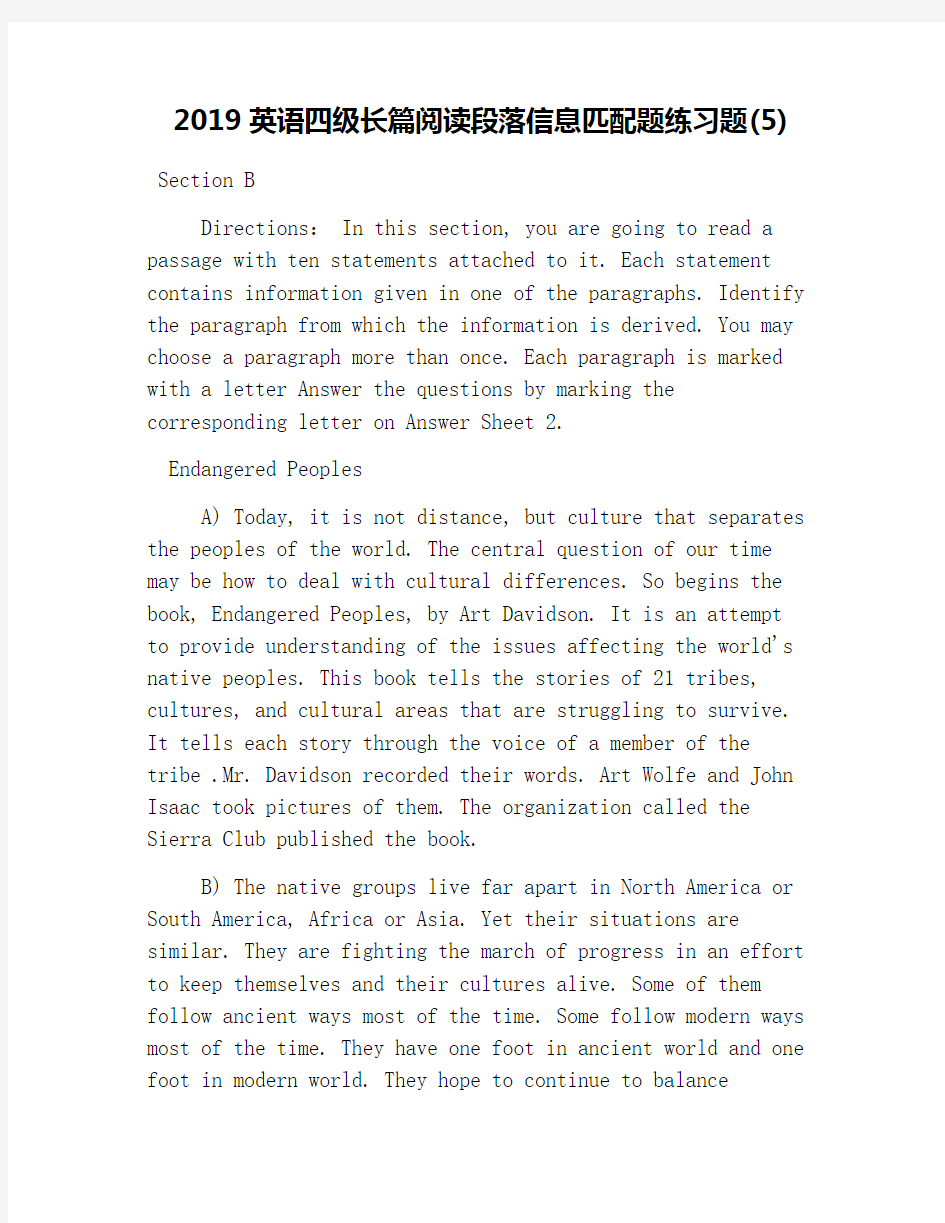
2019英语四级长篇阅读段落信息匹配题练习题(5)
- 格式:docx
- 大小:44.82 KB
- 文档页数:13


2019英语四级长篇阅读段落信息匹配题练习题(5) Section B
Directions: In this section, you are going to read a passage with ten statements attached to it. Each statement contains information given in one of the paragraphs. Identify the paragraph from which the information is derived. You may choose a paragraph more than once. Each paragraph is marked with a letter Answer the questions by marking the corresponding letter on Answer Sheet 2.
Endangered Peoples
A) Today, it is not distance, but culture that separates the peoples of the world. The central question of our time may be how to deal with cultural differences. So begins the book, Endangered Peoples, by Art Davidson. It is an attempt to provide understanding of the issues affecting the world's native peoples. This book tells the stories of 21 tribes, cultures, and cultural areas that are struggling to survive. It tells each story through the voice of a member of the
tribe .Mr. Davidson recorded their words. Art Wolfe and John Isaac took pictures of them. The organization called the Sierra Club published the book.
B) The native groups live far apart in North America or South America, Africa or Asia. Yet their situations are similar. They are fighting the march of progress in an effort to keep themselves and their cultures alive. Some of them follow ancient ways most of the time. Some follow modern ways most of the time. They have one foot in ancient world and one foot in modern world. They hope to continue to balance
between these two worlds. Yet the pressures to forget their traditions and join the modern world may be too great.
C) Rigoberta Menchu of Guatemala, the Nobel Peace Prize winner in 1992, offers her thoughts in the beginning of the book Endangered Peoples. She notes that many people claim
that native people are like stories from the past. They are ruins that have died. She disagrees strongly. She says native communities are not remains of the past. They have a future, and they have much wisdom and richness to offer the rest of
the world.
D) Art Davidson traveled thousands of miles around the world while working on the book. He talked to many people to gather their thoughts and feelings. Mr. Davidson notes that their desires are the same. People want to remain themselves~ he says. They want to raise their children the way they were raised. They want their children to speak their mother tongue, their own language. They want them to have their parents' values and customs. Mr. Davidson says the people's cries are the same: "Does our culture have to die? Do we have to disappear as a people?"
E) Art Davidson lived for more than 25 years among
native people in the American state of Alaska. He says his interest in native peoples began his boyhood when he found an ancient stone arrowhead. The arrowhead was used as a weapon
to hunt food. The hunter was an American Indian, long dead. Mr. Davidson realized then that Indians had lived in the
state of Colorado, right where he was standing. And it was then, he says, that he first wondered: "Where are they? Where did they go? "He found answers to his early question.